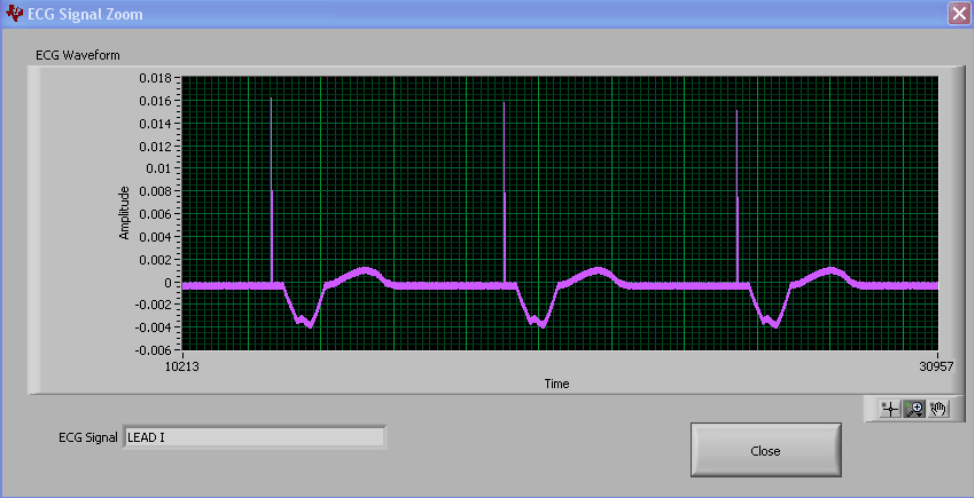SBAU171D May 2010 – January 2016 ADS1198 , ADS1298
-
ADS1298ECG-FE/ADS1198ECG-FE
- Trademarks
- 1 ADS1298ECG-FE/ADS1198ECG-FE Overview
- 2 Quick Start
- 3
Using the ADS1298ECG-FE Software
- 3.1 Application User Menu
- 3.2 Top-Level Application Controls
- 3.3 About Tab
- 3.4 ADC Register Tab
- 3.5 Analysis Tab
- 3.6 Save Tab
- 4 ADS1x98ECG-FE Input Signals
- 5 ADS1298ECG-FE/ADS1198ECG-FE Hardware Details
- ASchematics, BOM, Layout, and ECG Cable Details
- BExternal Optional Hardware
- CSoftware Installation
4.9 PACE Detection
The ADS1298 supports data rates up to 32kSPS for software PACE detection, which typically requires a data rate of at least 8kSPS.
NOTE
The ADS1298ECG-FE does not include software PACE detection algorithms.
The ADS1298 provides the user the flexibility of doing hardware PACE detection with external circuitry. PACE detection can be done simultaneously on two channels: one from the odd channels and one from the even channels. Refer to the ADS1298 product data sheet or ADS1198 product data sheet for additional details.
To turn on the PACE buffer and select the channels, set the PACE Register from the GPIO and OTHER Registers tab. The PGA outputs of the selected channels are available at connector J5, pins 1 and 2.
Figure 35 shows an example waveform created by a Fluke Medsim 300B processed by the ADS1298 at a data rate of 8kSPS. Using higher data rates increases power consumption because all channels must sample at this data rate simultaneously; thus, the PACE buffers offer the flexibility to process PACE signals separately from the ADS1298. The signal must be AC coupled to obtain the waveform\ shown below.
 Figure 35. Digitization of PACE Signal Using ADS1298
Figure 35. Digitization of PACE Signal Using ADS1298